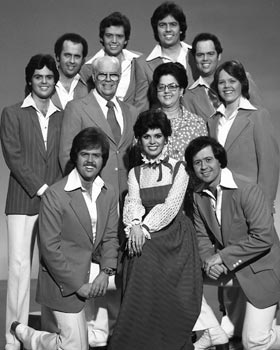Just have to ask the enemedia...

Posted on 03/12/2012 3:32:13 PM PDT by U-238
Most stars are born in clusters rather than singly, and there’s plenty of evidence that the Sun was too.
For one thing, the material of the infant solar system (as preserved in the earliest meteorites) was enriched by fresh supernova debris from at least one very young, massive star (having 15 to 25 solar masses) that exploded less than 5 light-years away, no more than 2 million years after the Sun's formation. Today no such massive star exists within 300 light-years of the Sun. Clearly, the early solar system had stars close around it.
But that was 4.57 billion years ago. Where are the Sun’s cluster-mates now?
Some of them, it turns out, should remain surprisingly nearby. An analysis by Simon F. Portegies Zwart (University of Amsterdam) finds that the Sun’s birth cluster started off with about 500 to 3,000 solar masses and a diameter smaller than about 20 light-years — typical for open clusters. Evidence for the cluster's mass and size, Zwart writes, is preserved in the anomalous chemical abundances and structure of the solar system's Kuiper Belt — the realm of small, icy objects out beyond Neptune. Some of the Kuiper Belt's objects are dynamically "hot"; they were stirred up and scattered by the gravity of at least one nearby cluster star making a close pass in early days.
(Excerpt) Read more at skyandtelescope.com ...
Off to college.
leeching student loan benefits too!
bflr
The Sun ate my baby.
Just have to ask the enemedia...

Remember these?



Actually I do
Ping
 |
||
| · join · view topics · view or post blog · bookmark · post new topic · subscribe · | ||
| Google news searches: exoplanet · exosolar · extrasolar · | ||
Can we find the Sun’s relatives? Yes. By identifying stellar relatives via their proper motion, or apparent movement across our line of sight, their position in the sky, and their chemical signatures, which he likens to their stellar DNA. Such stars, would be roughly one solar mass (the size of the sun) or less and have chemical abundances similar to the sun.
I shot this not too long ago of the M13 star cluster.
From where I am located, it was not visible to the unaided eye.

M-13 is a Globular star cluster in the Constellation Hercules. It contains several hundred thousand stars, and is approximately 25,000 light years from earth.
It's estimated the cluster has about half million stars and is about 100 light years diameter.
It's believed the age of M13 is about 14 billion years.
That is a very good photograph.
Thanks...BTW, very interesting article you posted here.
Yes, THANK YOU for posting this thread. Interesting topic and thought provoking.
(Thanks to Sunken Civ for his comment reminding me of the value of saying THANK YOU)
I had never considered , before, the idea that our Sun had siblings.
We are all made from star stuff. The atoms in our body came from a heart of a star that blew itself up billions of years ago.
We have seen the lost siblings of the sun, and they is us.
The chemical fingerprint of those sibling systems should be similar to our solar system and if evolution started from scratch here, it may have started from scratch in those systems as well. If things must be just so for life to get started, sibling systems will be a juicy target for any ET search, if we can identify them.
Interesting fact: Alpha Centauri A and B are about the same size and age as the Sun. Could they be siblings? Maybe. I think the composition is similar. I don't know how well their motion tracks ours.
Alpha Centauri A and B could be from the same stellar nursery. If Proxima was bound to the Alpha Centauri system during its formation, the stars would be likely to share the same elemental composition. We can say its a “captured” heavenly body.
Disclaimer: Opinions posted on Free Republic are those of the individual posters and do not necessarily represent the opinion of Free Republic or its management. All materials posted herein are protected by copyright law and the exemption for fair use of copyrighted works.